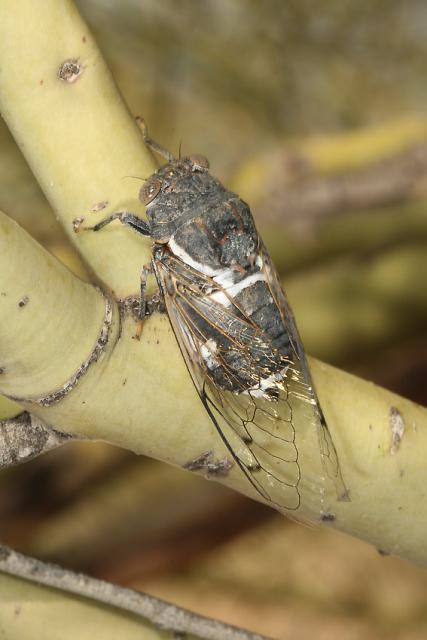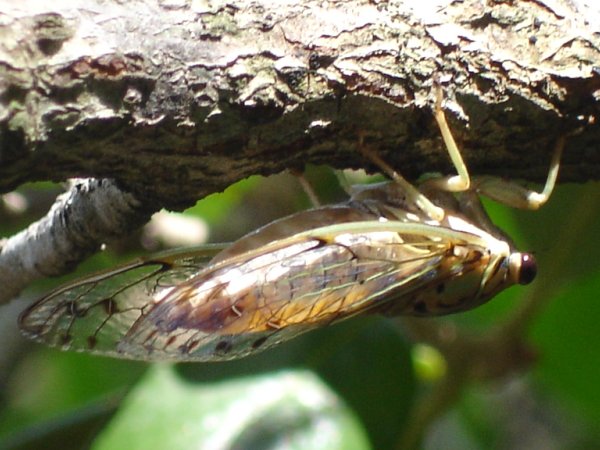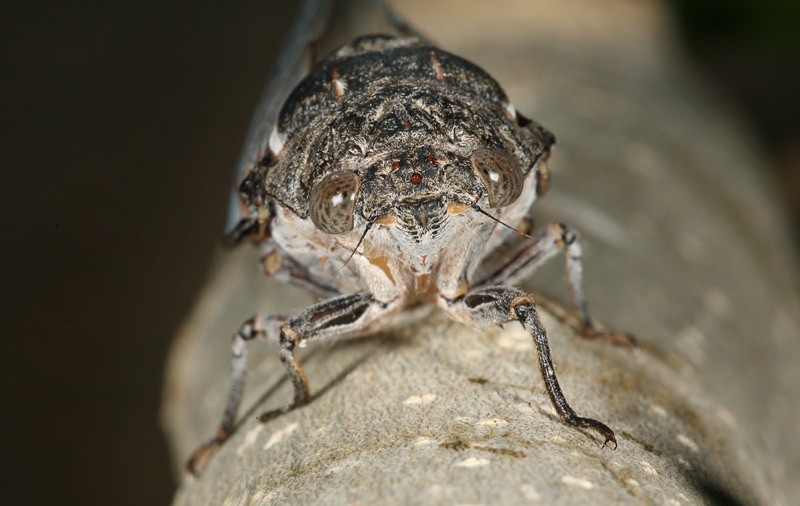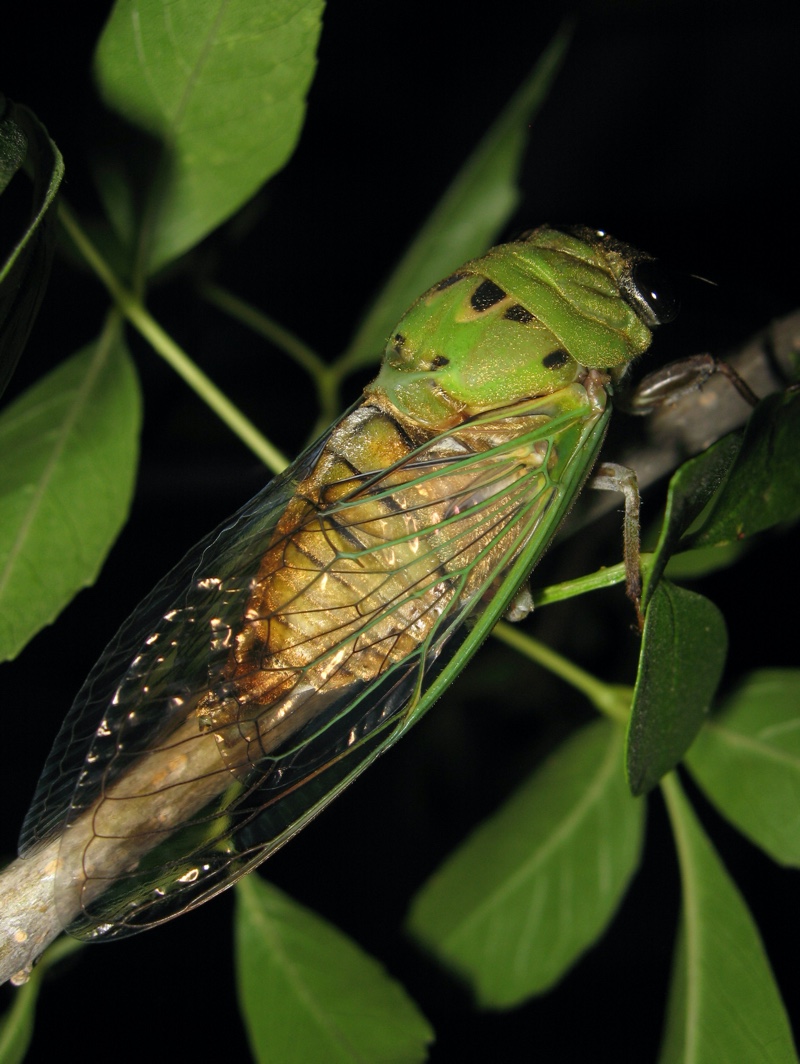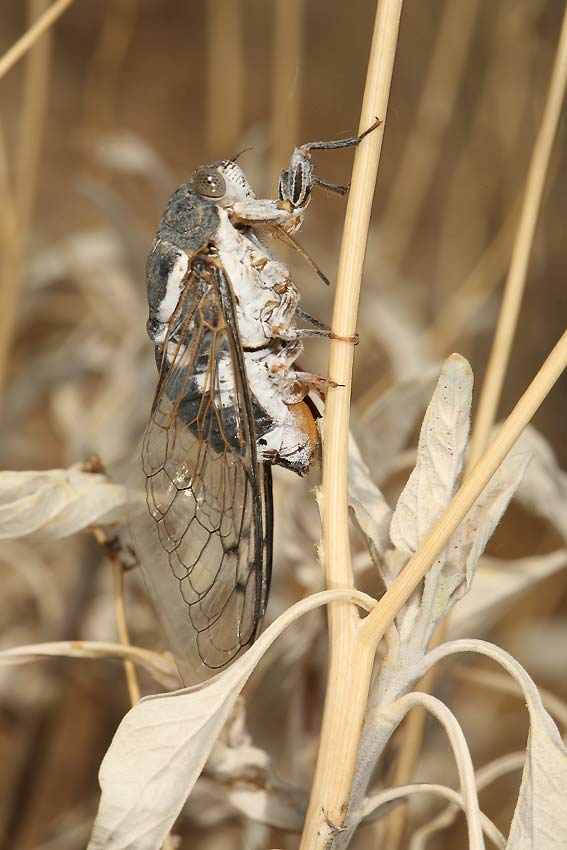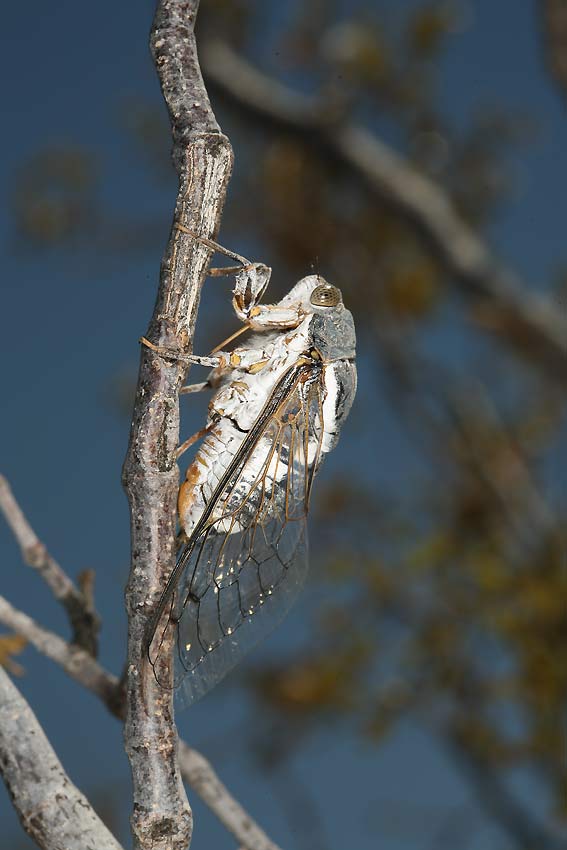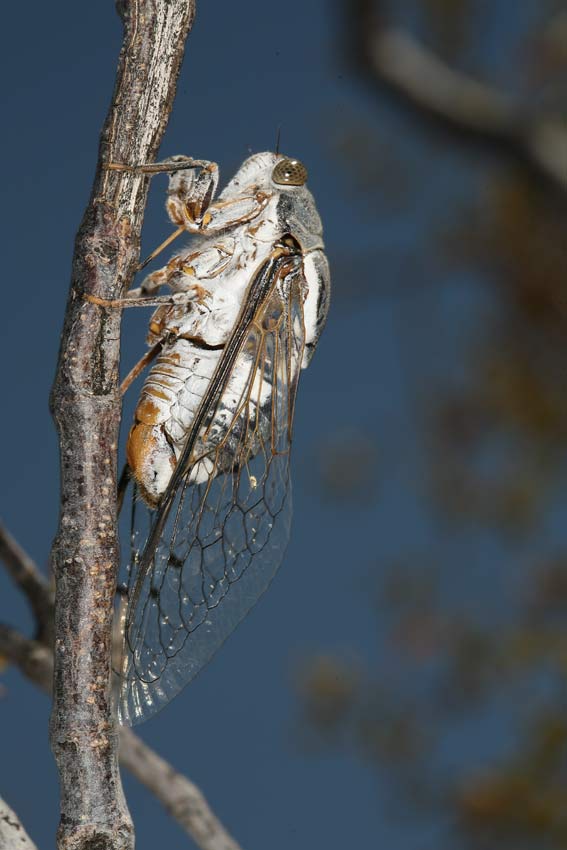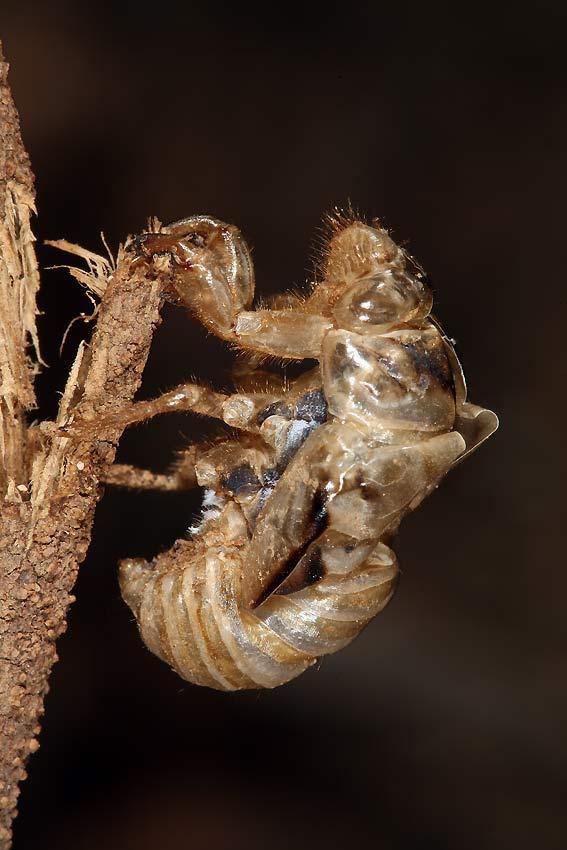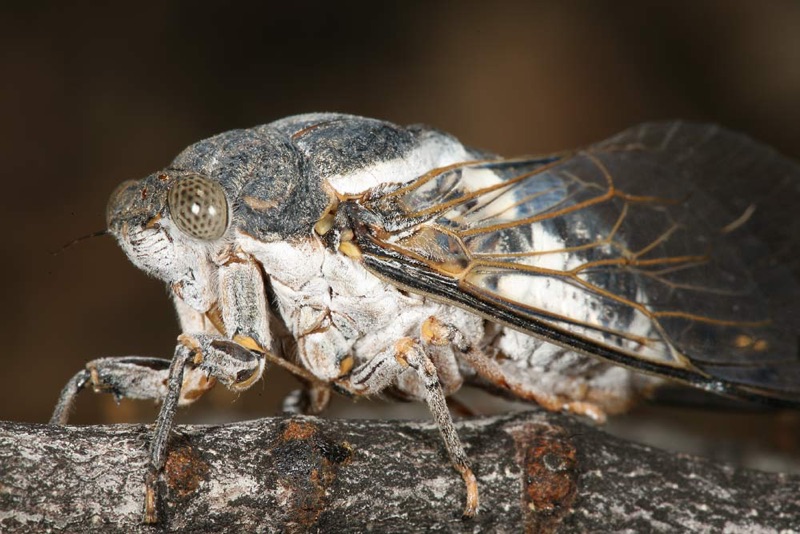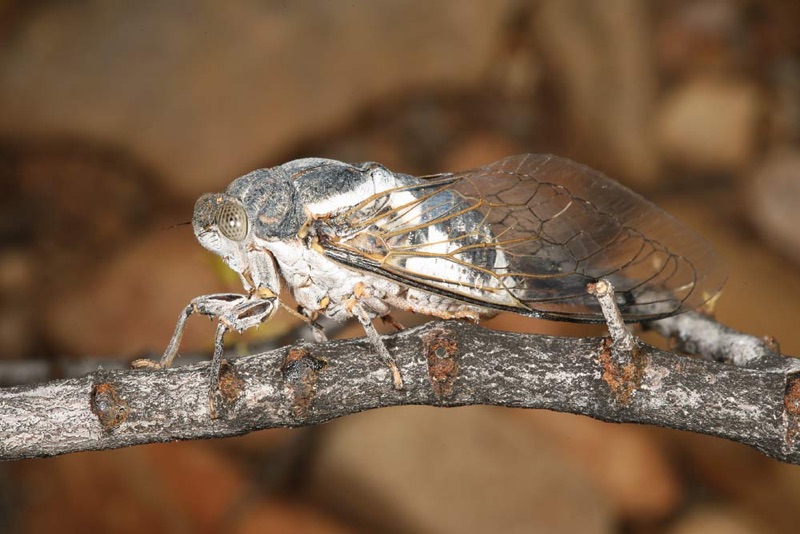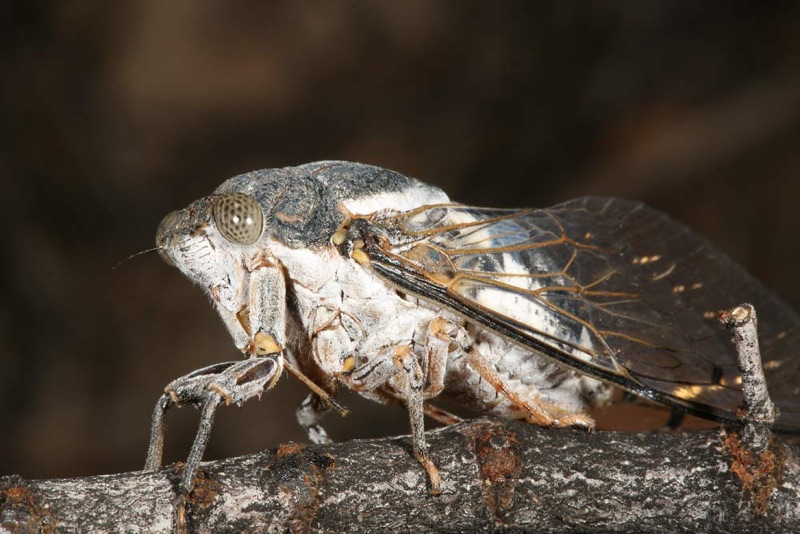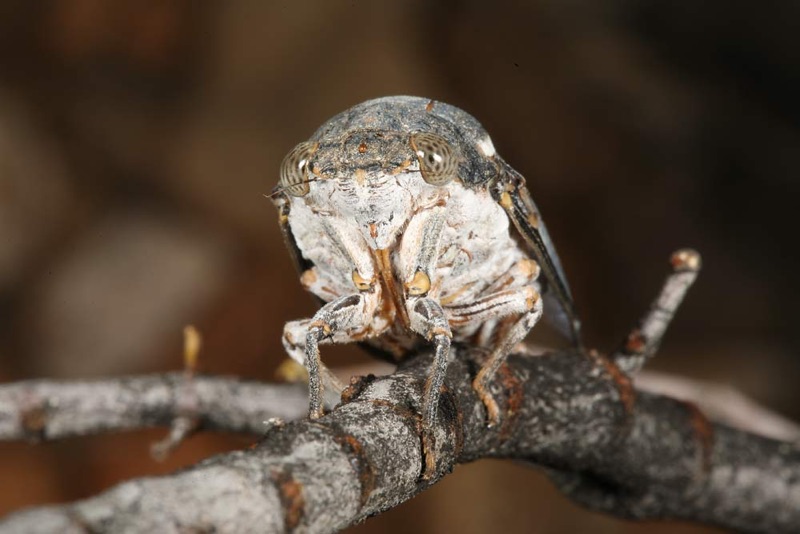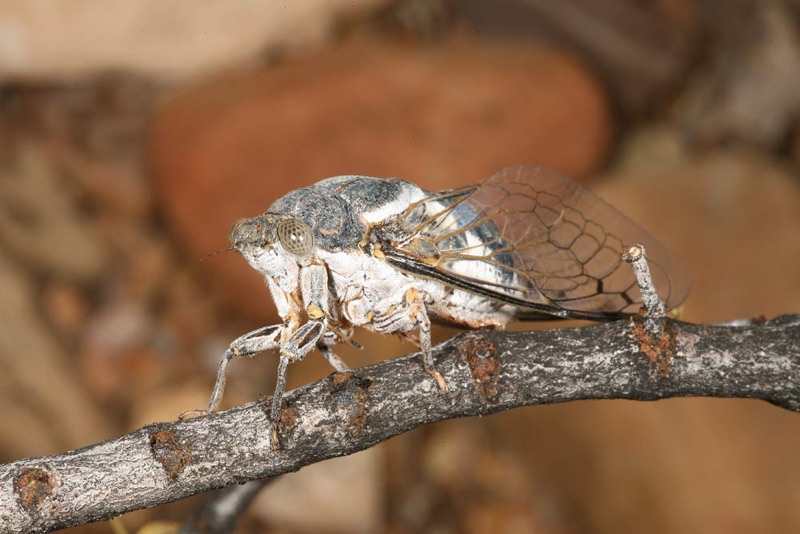Cacama californica Davis, 1919.
Name, Location and Description
- Cicada Name: Cacama californica Davis, 1919
- Short Name: C. californica
- Common Name: Cactus Dodger
- Where it is found: CA, NV
- Maps: Biogeography of the Cicadas (Hemiptera: Cicadidae) of North America, North of Mexico [PDF]
- Description: n/a
- Eye Color: n/a
- Pronotal Collar Color: n/a
- Identification: Bug Guide
- Taxonomic Information: Integrated Taxonomic Information System
- Identification: iNaturalist
Classification:
Family: Cicadidae
Subfamily: Cicadinae
Tribe: Cryptotympanini
Subtribe: Cryptotympanina
Genera: Clidophleps
Species: Cacama californica Davis, 1919
List of sources
- Full Binomial Names: ITIS.gov
- Common names: BugGuide.net; The Songs of Insects by Lang Elliott and Wil Herschberger; personal memory.
- Locations: Biogeography of the Cicadas (Hemiptera: Cicadidae) of North America, North of Mexico by Allen F. Sanborn and Polly K. Phillips.
- Descriptions, Colors: personal observations from specimens or photos from many sources. Descriptions are not perfect, but may be helpful.
Notes:
- Some descriptions are based on aged specimens which have lost some or a lot of their color.

